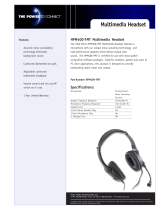
A wide range of Orbital Motors
Characteristic, features and application areas of Orbital Motors....................................................................................5
Characteristic features of Danfoss Orbital Motors.......................................................................................................... 5
Technical features of Danfoss Orbital Motor.....................................................................................................................5
The Danfoss Orbital Motors are used in the following application areas:..............................................................6
Survey of literature with technical data on Danfoss Orbital Motors..............................................................................6
Conversion Factors
Orbital Motors, General
Operating Principle..........................................................................................................................................................................8
Gearwheel set...............................................................................................................................................................................8
Distributor valve..........................................................................................................................................................................8
Spool valve...............................................................................................................................................................................8
Disc valve with valve drive................................................................................................................................................. 9
Disc valve on the output shaft..........................................................................................................................................9
Selection of Motor Type
OML, OMM, OMP, OMPW, DH....................................................................................................................................................10
OMPW N............................................................................................................................................................................................ 10
OMR, OMH, DS.................................................................................................................................................................................11
OMRW N............................................................................................................................................................................................ 11
OMEW.................................................................................................................................................................................................11
OMS, OMT, OMV.............................................................................................................................................................................11
TMT......................................................................................................................................................................................................11
Features of main types.................................................................................................................................................................11
OML, OMM, OMP, OMPW, DH.............................................................................................................................................. 11
OMPW N.......................................................................................................................................................................................11
OMR, OMH, DS...........................................................................................................................................................................11
OMRW N.......................................................................................................................................................................................12
OMEW........................................................................................................................................................................................... 12
OMS, OMT, OMV........................................................................................................................................................................12
TMT................................................................................................................................................................................................ 12
Motor Variants.................................................................................................................................................................................12
Motors with corrosion resistant parts............................................................................................................................... 12
OMP/OMR with dust seal cap...............................................................................................................................................12
Wheel motor...............................................................................................................................................................................13
OMP/OMR with needle bearing.......................................................................................................................................... 13
Super low leakage motor.......................................................................................................................................................13
Short motors...............................................................................................................................................................................14
Ultrashort motor....................................................................................................................................................................... 14
Motors with integrated positive holding brake............................................................................................................ 14
Motors with integrated negative holding brake...........................................................................................................14
Motors with integrated flushing valve..............................................................................................................................15
Motors with tacho connection............................................................................................................................................ 16
Motors with speed sensor..................................................................................................................................................... 16
OMT N motor..............................................................................................................................................................................16
Selection of Motor Size
Build-up of the Function Diagram...........................................................................................................................................17
Continuous operation/intermittent operation/peak load.........................................................................................17
Efficiency......................................................................................................................................................................................18
Volumetric efficiency...............................................................................................................................................................18
Example........................................................................................................................................................................................18
Hydraulic mechanical efficiency..........................................................................................................................................19
Example:.......................................................................................................................................................................................19
Total efficiency...........................................................................................................................................................................20
Use of the Function Diagram.....................................................................................................................................................20
Minimum speed..............................................................................................................................................................................21
Bearing Dimensioning
Technical Information
General, Orbital Motors
Contents
520L0232 • Rev 0202 • June 2015 3




















